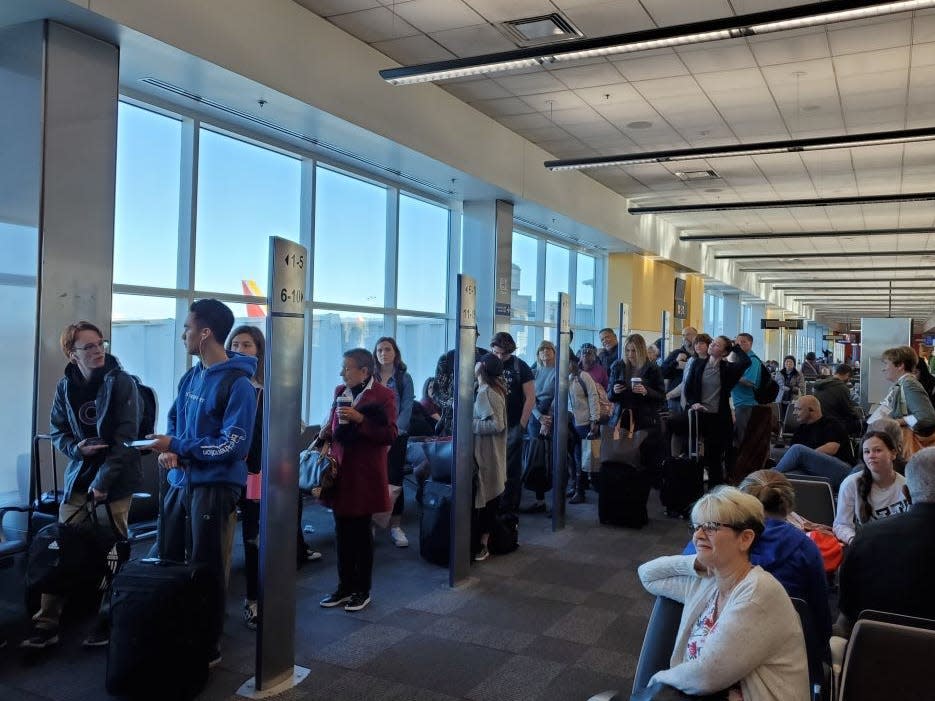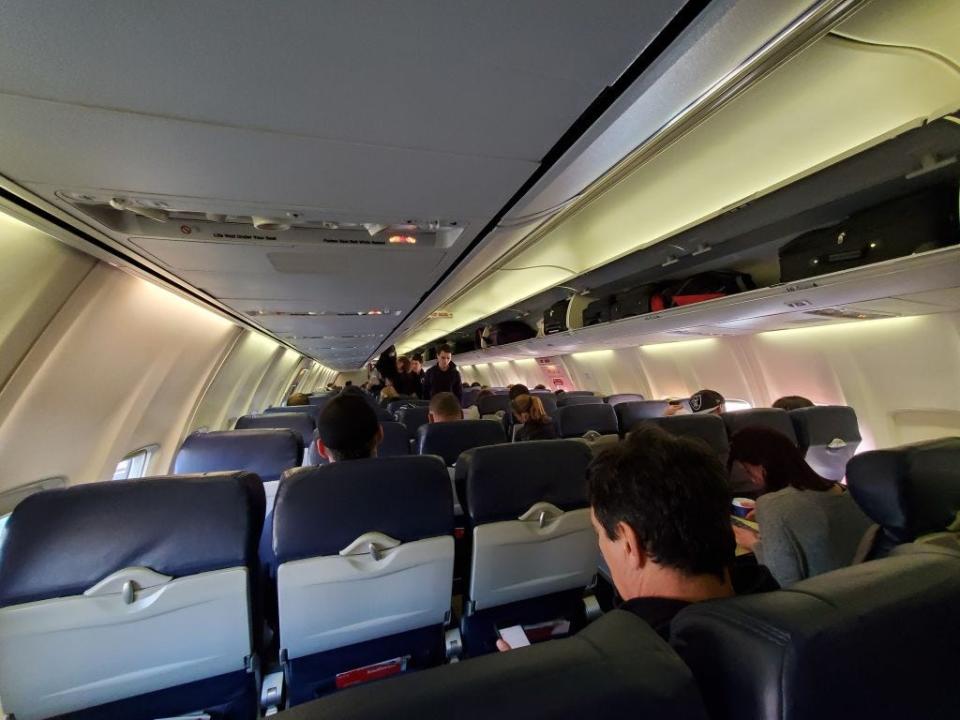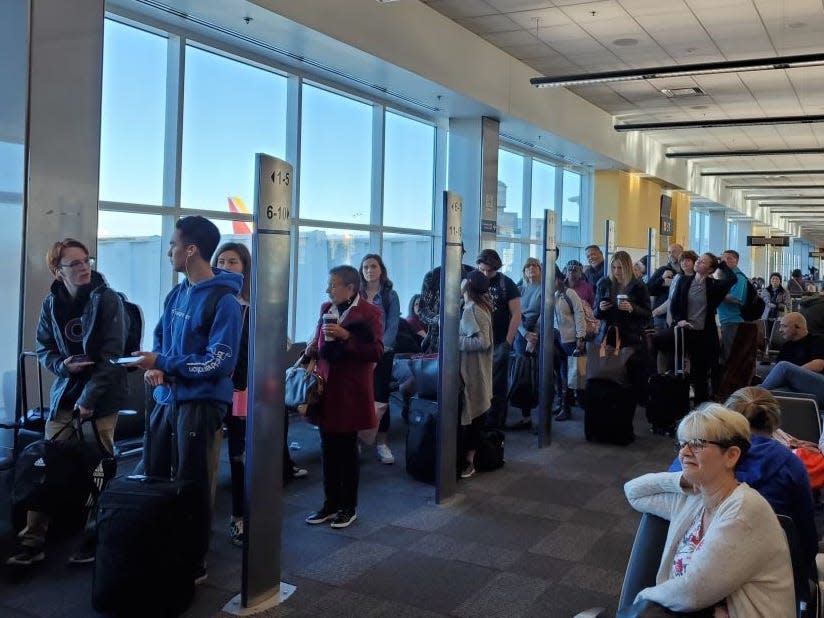Southwest says 80% of its customers didn't like the unassigned seating policy. But I will miss it.

Southwest Airlines is ending its unique open seating policy after more than 50 years.
The airline said its research showed 80% of customers prefer assigned seating.
But I'll miss the simplicity and calmness of the open seating model.
When Southwest Airlines announced Thursday it was dropping its unique plane seating system, I was among the (apparently small) group of people who reacted with disappointment.
For the uninitiated, for more than 50 years Southwest has not given seat assignments to its passengers, unlike virtually every other major airline. Instead, passengers are assigned a boarding order number, and once they are on the plane they can simply sit wherever they'd like.
"Southwest definitely has a lot of very passionate fans," Sean Cudahy, aviation reporter at The Points Guy, told Business Insider, adding that with the unassigned seating method, "you get a mixed bag of people that love the policy and people that hate it."
In announcing the policy change, Southwest said their research showed 80% of customers preferred an assigned seating system, while 86% of new customers did. Their open seating model was also cited as the number one reason passengers opted to fly other airlines.
I, for one, loved it, as I was reminded of the night before Southwest made its announcement, when I flew with the airline from Burbank, California, to Denver, and found the boarding and seating process as easy, straightforward, and pleasant as I always have.
Avoiding the dreaded 'gate lice'
Probably my favorite thing about flying Southwest is lining up to board. Because of the assigned boarding number, I know in advance exactly when I'm going to board.
I almost always fly with just a carry-on and no checked luggage — in part because I'm worried about my bag getting lost. When I fly on other airlines, I have to worry about trying to get on the plane as quickly as possible so they don't run out of overhead space and force me to gate-check my bag. I also just like to ensure that I can actually store my bag above where I'm sitting and not in whatever overhead space happens to be left by the time I board.
That typically means rushing to the gate to try and stake out a good spot so I can board as early as possible in my designated group.
It also means navigating the chaos that can be found at essentially every other airline's gate besides Southwest.
Sure, other airlines technically have boarding groups that are intended to create order. But inevitably, people in groups four and five are standing around, clogging up the area, even though only groups one and two are boarding — forcing you to awkwardly scoot through the crowd, asking people what boarding group they are in just to make sure you actually get in with your designated group and aren't left in the dust.
They don't call them "gate lice" for nothing.
Sure, with many airlines I could simply pay for an early boarding position (often in addition to paying for the seat assignment itself), but with Southwest, all I had to do was make sure I pulled out my phone and checked in exactly 24 hours before my flight to get a decent enough boarding position. I always felt like I never had to plan ahead to get a good seat on a Southwest flight — I just had to check in on time.
Of course, with Southwest, I could also pay in advance for EarlyBird check-in, which costs between $15 to $99. And, if for some reason I was late to check in and got a late boarding number, I could still pay for an earlier boarding position after the fact — something that can now cost anywhere from $30 to $149 — if you absolutely need to board early.
Cudahy noted that Southwest said it's gotten a lot of positive feedback from customers on how calm and orderly their boarding process is and that they "want to try and keep the general spirit of that as they adapt it to fit the assigned seating model."
Though it's unclear at this point what that would look like with seat assignments.

Fast and easy boarding process
Calmness wasn't the only thing Southwest's strategy had going for it.
"They were the fastest in the industry forever in terms of the boarding process that they used," Jason Steffen, an astrophysicist at the University of Nevada, Las Vegas, who came up with a plane-boarding method that he says is faster than any used by the airlines.
Steffen's boarding process was even tested against Southwest's on PBS's "Making Stuff Faster" over a decade ago. (Spoiler alert: Steffen's process won, but the Southwest representative on the show said he did not think it was practical enough in real-world situations.)
But as my own Southwest flight Wednesday night reminded me, the open boarding method is fast — in part because people naturally spread out as they try to pick window and aisle seats up and down the plane before filling in the middles.
I happened to get particularly lucky on my flight. My partner and I boarded at the end of group A and grabbed an aisle and window seat in an empty row, of course with the hope that no one would sit in the middle. The plane wasn't full, and we ended up having the row to ourselves.
But even on full flights, as long as we check in as soon as possible we almost always sit together.
Some families also love Southwest's open seating policy for this reason. Similar to other airlines, Southwest allows families with children under seven to board early, between A and B groups, allowing them to generally find seats together. For some people, they find it easier than picking seats for everyone in advance.
Part of the Southwest brand
Though many customers may ultimately welcome the change, the open seating has been an integral part of the Southwest brand for over half a century, in addition to its two free check bags (which the airline says isn't going away) and low-cost fare options.
"You can't mistake a Southwest gate when you walk up to it," Cudahey said of the airline's pillars that mark the boarding numbers for passengers to line up next to.
It's possible Southwest will find a way to maintain a boarding system that still uses those pillars, and that still maintains the calmness at their gates that always greets me like a warm hug in an otherwise chaotic airport.
But without the open seating, the airline is losing part of what sets it apart — even if that means gaining new customers.
"It really kind of comes down to is their cult following getting in the way of a broader appeal?" Steffen said.
Read the original article on Business Insider


